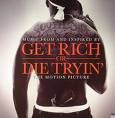
Rotiboy is famous for its fatal-attraction aroma of coffee-flavored Mexican buns, which smells from distant away, and attracts anyone who passes by the shop. Just go to KLCC Suria on Saturday and see how long the queue down there on the ground floor in front of Rotiboy’s cash counter. In fact, this long queues used to present a problem for owners of Rotiboy’s outlets - a rare case of good-news problem.
The story of Rotiboy is also an interesting entrepreneurship case study for its remarkable experience undergoing a meteoric rise followed by a spectacular fall soon after.
Rotiboy was first set up in 1998 in Bukit Mertajam, Penang, providing small-size, affordable cakes and buns in the neighborhood which soon became a household name in Bukit Mertajam. The founder, Hiro Tan was a former lecturer in economics before deciding to open up his own bakery business.
With his bakery products getting popular, Hiro sensed a new opportunity. He wanted to jump into a bigger pond, catching bigger fish. So he decided to move to the country’s capital, Kuala Lumpur, which has been a land of opportunities for many others.
The first Rotiboy outlet in Kuala Lumpur was opened in 2002, which is based in Wisma Central, Jalan Ampang. This is where Rotiboy’s Mexican bun jumped start a phenomenal growth and at the peak of its fame, the outlet was selling an outrageous number of 20,000 buns per day. More and more outlets started mushrooming, one after another - KLCC Suria, Midvalley, The Mines and so on. Rotiboy’s next target - overseas covering Singapore, Thailand, Indonesian and China and this was pulled off expertly through the robust franchise system. The target was to achieve 100% growth rate every month.
Seeing the overwhelming success of Rotiboy, copycats and imitators started sprouting like mushrooms. Soon came Pappa Roti, Roti Mama, Roti Mum, Baker’s Boy, Mr Bun and all sorts of bun shops all over the places. They all sniffed opportunities, and they want one thing in common - profits.
However, good things came to an almost abrupt end. While the buns were getting a crazy attention in 2004 and 2005, things were in the reverse from the beginning of year 2006. Rotiboy was no longer people’s savior. It is no longer the in-thing for the day. The fall was so catastrophic that the company had to pull out almost its entire operation in Singapore. The normally crazed cream filled buns were not selling like hot cakes anymore.
Apart from Rotiboy, its copycats and imitators suffer the same fate, if not worse.
Why is this so? Why a popular product underwent a free fall within a short span of time?
According to one of the owners of the outlets, the bun was no longer selling much because ‘the fad is over’. They also learnt an important lesson, which is to start diversifying products in anticipation of market uncertainty selling merely one product. They need to keep reinventing and reengineering the products and services to cater the evolving demand and market.
Maybe, the bun market will be booming again when the next fad cycle arrives, but when it will come or whether it will eventually be here is surely be a long debate.
Moral of the story is; it is not a wise move to start a business because of some buzz or hype that last only for a short while. A viable business model takes account the sustainability of the demand and the market. Keep that in mind when opening a new business.




No comments:
Post a Comment